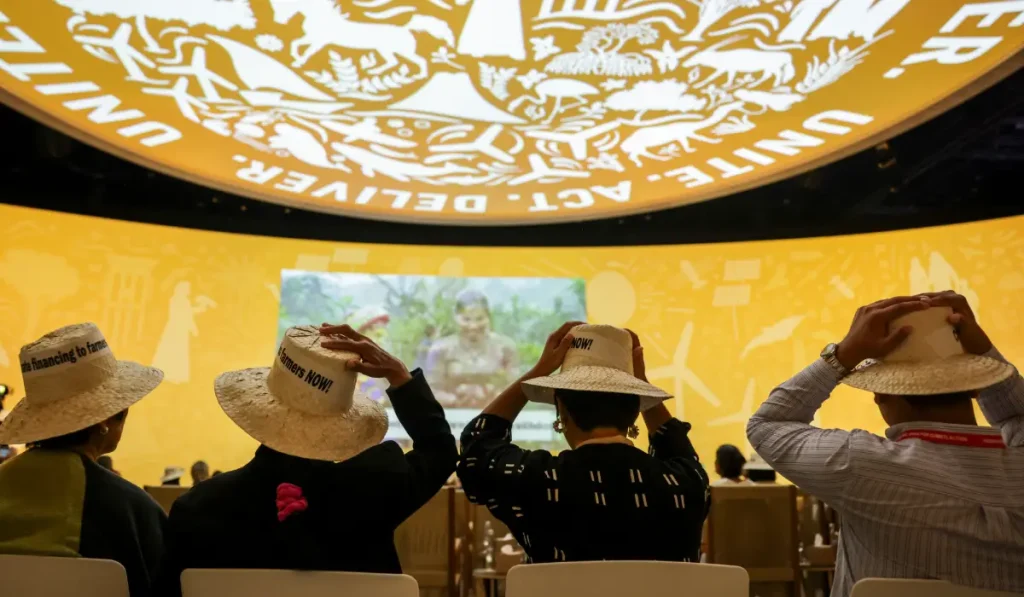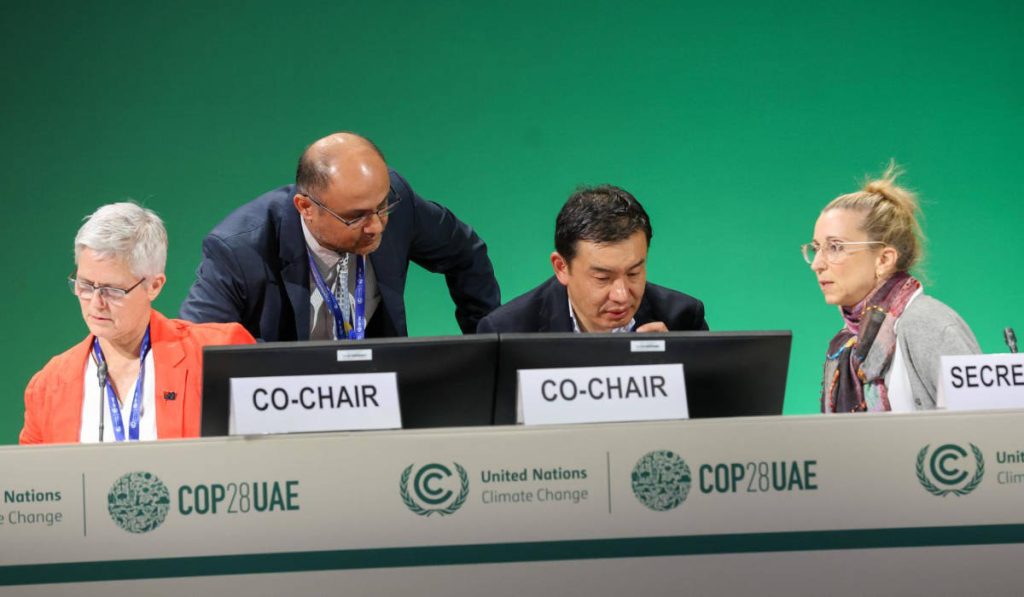The Intergovernmental Panel on Climate Change (IPCC), recently published their final synthesis report from their sixth assessment cycle (AR6). The report is a compilation of the most relevant findings of the IPCC’s three working groups over the past few years. While the synthesis is a verbatim copy of previous findings, delegates still had to reach agreement on which aspects of the reports represented the most critical messages for policy makers. As such, the report does not offer much by way of fresh information, however it comes at a critical juncture in charting long term climate action, as it is expected to play a key role as an input into the Global Stocktake at COP28 in Dubai, later this year. It will also be the last IPCC report for a number of years before the next IPCCs cycle. Overall the last cycle for AR6 took 8 years to complete.
Headline findings are that policies already in place at the end of 2021, set the world on course for a temperature rise by 1.5OC this century reaching 3.2 OC by 2100, and that this only drops to 2.8 OC if pre-COP26 plans are implemented. The report finds that many places across the globe are unable to adapt to this level of warming and have reached their adaptation limits, and that loss and damages will “escalate with every increment” of temperature increase. It also found that increasing finance to climate investments was important to achieve global climate goals and that governments, through public funding and clear signals to investors, were key in reducing barriers. The report is more detailed then previous assessments on the synergies and trade-offs between mitigation and adaptation, the human dimensions of climate change, adaptations options, and mitigation benefits. It also demonstrates more evidence of loss and damage, and its attribution to human influence is more robust.
As is typically the case, the exact language used in the Summary for Policymakers is a negotiated document, with delegates working day and night for almost a week, running two full days over schedule. Delays and long hours were challenging for many, particularly some developing countries which had to choose between continued participation or catching their flights home.
Debates around the language mirrored those that you’d typically find in the corridors and negotiation rooms of the UNFCCC’s annual COPs, following typical developed vs developing country bifurcated positions. China, the US, Saudi Arabia, and Norway lobbied the strongest to make changes to the text, however their positions typically reflected those that they have historically adopted in the negotiations, duly supported by developed or developing country blocs as the case may be. Positions by the US on the need for exploring new forms of finance were unsurprising and debates about the role of “common but differentiated responsibilities” and the meaning of equity between parties will be familiar to followers of the negotiations. According to Third World Network “A lot of time was spent by developing country delegates to balance the messages in the [summary] to reflect equity and differentiation among developed and developing countries. The fallback option often was to go back to previously agreed language from the three working groups summary reports.”
One of the most controversial conclusions was the recommendation that GHG emissions must decrease by 60%, and CO2 by 65% by 2035 in order to have a 50% chance keeping warming to 1.52OC by the end of the century. China successfully argued for the deletion of this numerical reference in the summary for policymakers, with the compromise being that it would be in an adjacent chart. Norway also pushed for a change on a section referring to the need for “deep, rapid, and sustained” emissions reductions starting this decade. The final wording stresses the need for just “strong” emissions reductions. Developing countries, while lending support to the need for “deep, rapid and sustained emissions reduction”, said that an equal focus must be on messaging the importance in developing countries of adaptation, resilience, loss and damage, development, finance and the means of implementation needs and challenges.
Other positions adopted by developed and developing countries in relation to equity and finance will also be unsurprising to readers. According to Third World Network’s reporting of the event, developed countries pushed to remove reference to the UNFCCC and the principle of common but differentiated responsibilities, an issue which was defended by developing countries led by India, Brazil, China, Saudi Arabia and South Africa. Ultimately representatives agreed to text that stated that equity was a central element in the UN climate regime. In relation to finance, reportedly there was also “a huge push by developed countries to change the narrative from “lack of finance” to barriers to “access” finance, with attempts to dismiss the failure of developed countries to meet finance obligations and commitments.India, Brazil, Saudi Arabia and China also reportedly resisted attempts to remove the language on the $100 billion by 2020 goal, and the reference to this target was retained.
Debates also flared on whether to emphasise the fact that renewables were now cheaper than fossil fuels in many regions (Germany, Denmark and Norway argued for this), or that fossil fuels were the root cause of climate change (Saudi Arabia strongly opposed this). Brazil, India, China and Saudi Arabia argued that a one-size fits all approach does not work, and that the technologies were not cost-effective in every region of the world. The report ultimately recognised the falling costs and increased deployment of renewables and that maintaining emission intensive systems may, in some regions and sectors be more expensive than transitioning to low-emission systems.
Language around Carbon Capture and Storage (CCS) and carbon dioxide removal (CDR, meaning activities that remove GHGs from the atmosphere such as enhanced weathering and direct air capture) was also contentious. In relation to CDR, Germany, Denmark, Luxembourg, France, Bolivia, India, and Kenya wanted to highlight the risks and limitations of the implementation of CDR technologies, while Saudi Arabia, Canada, and Japan wanted to balance the message with the importance of CDR for achieving net zero carbon dioxide or GHG emissions reductions. Similar debates surrounded CCS, with Saudi Arabia, arguing that challenges with renewables should also then be addressed in the report, to balance the discussion of challenges with CCS. Ultimately a footnote was added addressing both the benefits and disadvantages of CCS.
Lastly, there were debates that the global modelled emission pathways and scenarios used assumptions that did not factor in equity. This is particularly interesting point of debate, as it highlights the intricate link between how the IPCC modelling in turn informs political negotiations at the COP. The main issue is the extent to which the models place an unfair burden on developing countries to decarbonise. In a lengthy analysis on the use of Integrated Assessment Modelling (IAM) within IPCC reports, CarbonCopy challenges the limitations of these models and the fact that they are used to set out decarbonisation pathways that they believe contain inherent inequities. They argue the IPCC-assessed 1.5 °C pathways single out coal as the target for rapid reduction (88% reduction in unabated coal generation until 2030, with considerably more rapid declines in coal consumption as a whole (73%) than oil (10%) or fossil methane gas (14%)). Noting that coal is predominately used in the developing world, they argue that these models ignore the socio-political equations like the burden of energy transition on poorer countries. This has the result of under estimating the levels of reduction in oil and gas in the developed world. Citing, a recent study published by Muttitt and others in Nature in February this year, they argue that countries heavily dependent on coal—China, India and South Africa—are encouraged to follow a coal phase out that translates to a national decline twice as rapid as that achieved historically for any power technology in any country, relative to system size. Muttitt and his co-authors argue that this is socially and political unfeasible and that more realistic pathways require CO2 emissions reductions in the global North to be 50% more rapid. They find that an excessive focus on coal phase-out as the primary mitigation tool in modelling (often because coal phase outs are more cost effective overall) can create a perverse narrative that developing countries must contribute more to mitigation than developed countries. In essence this means that IPCC pathways need to also interrogate models that place the primary burden on developed countries to decarbonise, particularly in relation to oil and gas. Acknowledging the limitations of modelling, in the final plenary meeting of the IPCC (following requests led by India, Saudi Arabia and China), a disclaimer was elevated from a footnote into a box on modelling scenarios that stated that the global modelling contained “regionally differentiated assumptions and outcomes” and that most assumptions do not account for global equity, environmental justice or intra-regional income distribution. Unsurprisingly this debate around the science and modelling will in turn feed into debates at COP28 about whether to expand the existing commitment to phasedown unabated coal power to a phase down or phase out of all fossil fuels, including oil and gas.





